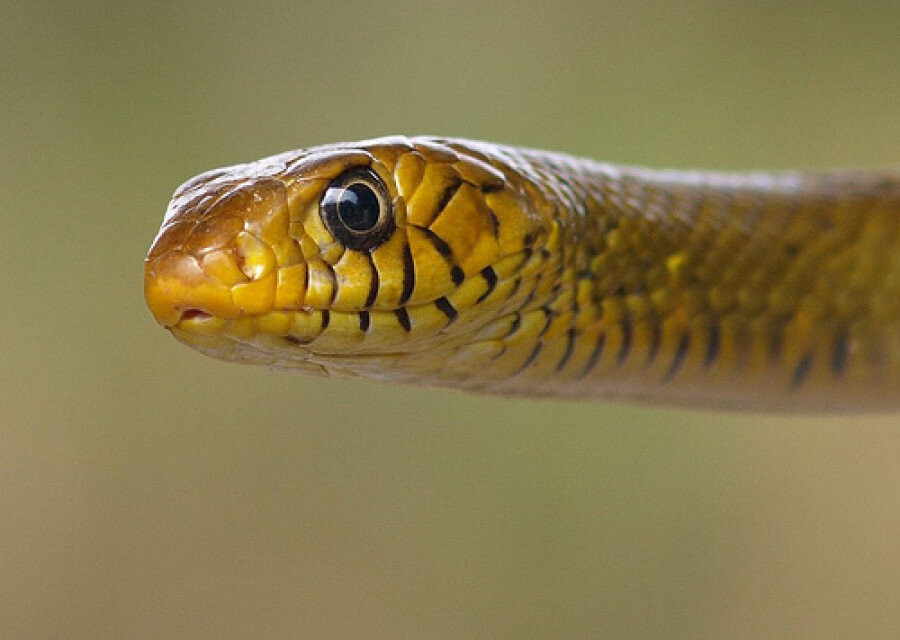Health
Call for awareness, training to reduce snakebite deaths
Nepal has committed to reducing 50 percent of deaths and disabilities through snakebite envenomation by 2030. Each year, around 2,700 people, die of snakebites in the country.
Post Report
As the deadline to reduce 50 percent of existing deaths and disabilities from snakebites nears, herpetologists and public health experts emphasise the urgency for awareness and training for local health workers to meet this crucial health goal.
They say that fatalities and disabilities from snakebites can be significantly reduced if vulnerable populations, especially children, women and farmers residing in rural areas, are made aware of the risks.
“Along with the awareness, health workers serving at the local level should be trained to deal with snakebite cases,” said Dr Sanjib Kumar Sharma, rector at BP Koirala Institute of Health Sciences. “Trained health workers can manage snakebite cases more effectively than others.”
Snakebite, which kills hundreds of people every year, is a major public health scare in Nepal.
Each year, around 2,700 people, mostly children and women from Nepal’s Tarai region, die of snakebites, according to a March 2022 report published in The Lancet, a leading international medical journal.
However, snakebite cases are vastly underreported in the country. Snakebite incidents are also common among cattle, and thousands of farmers are affected every year.
The government has committed to reducing 50 percent of deaths and disabilities through snakebite envenomation by 2030, the national target aligned with the World Health Organisation’s ‘Snakebite Roadmap’.
“The government has created a pool of doctors and experts for snakebite case management and master trainers,” said Sharma. “Along with other measures, authorities concerned should also focus on launching an awareness drive, which will make a huge difference in lessening overall snakebite incidents.”
Moreover, along with awareness, identifying the snake will also be crucial for case management. Health workers ask the public to take photos of snakes if they are able to after they are bitten, which helps them identify the snake so that they can start treatment accordingly.
“Archive of the photos of snakes available in the country should be maintained so that health workers could identify the snakes’ types and start treatment accordingly,” said Dr Sunita Ghimire, a molecular biologist. “Risk of deaths and disabilities increases due to inability to identify the snakes’ type.”
Experts say authorities must also strengthen health infrastructures to achieve the target. They say due to poor infrastructure in healthcare facilities—lack of doctors, anti-snake venoms, ventilator support systems, and kidney dialysis facilities—dozens of people die from snakebite every year.
While health facilities are ill-equipped and short on anti-snake venom, many people in rural areas lack awareness and often consult shamans instead of physicians.
Doctors say women who go to the fields to collect fodder, farmers who do plantations or harvest, and children who play in open areas are more vulnerable to snakebite.
Poor people living in thatched-roof houses are also highly vulnerable to snakebite, as snakes visit such homes in search of rats, their fodder.
Experts say there should be a greater awareness drive on keeping the houses and surroundings clean, preventing children from playing in the bushes and avoiding walking at night. If absolutely necessary, people must use torchlights while walking in the dark.
Nepal imports polyvalent antivenom from India, which is effective against four common species of snakes found in India: the common cobra, common krait, saw-scaled viper, and Russell’s viper. Saw-scaled viper has not yet been found in the country.
Deaths from pit viper bites in the hills and mountainous regions have also risen recently. However, the antivenom made for other venomous snakes does not treat pit viper’s case.




 8.12°C Kathmandu
8.12°C Kathmandu












%20(1).jpg&w=300&height=200)
